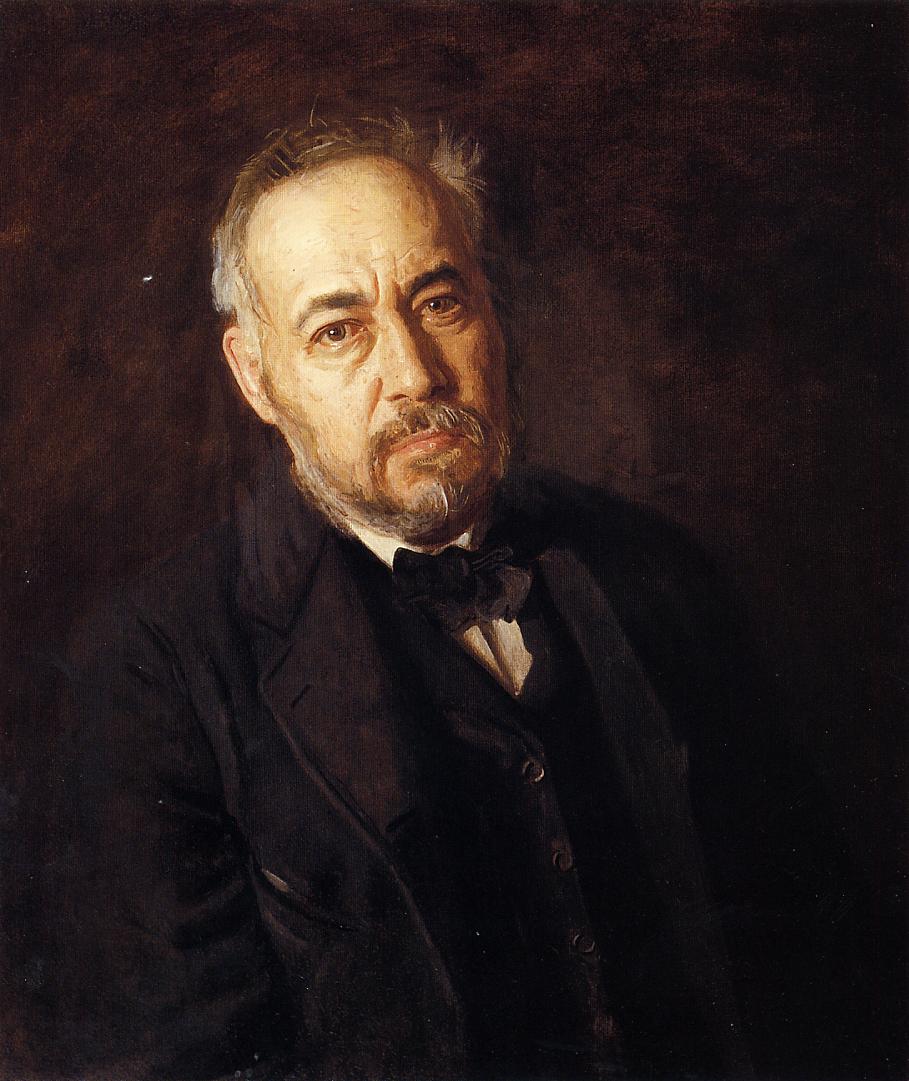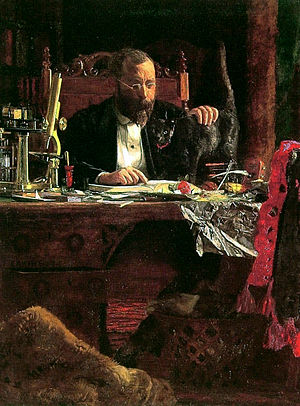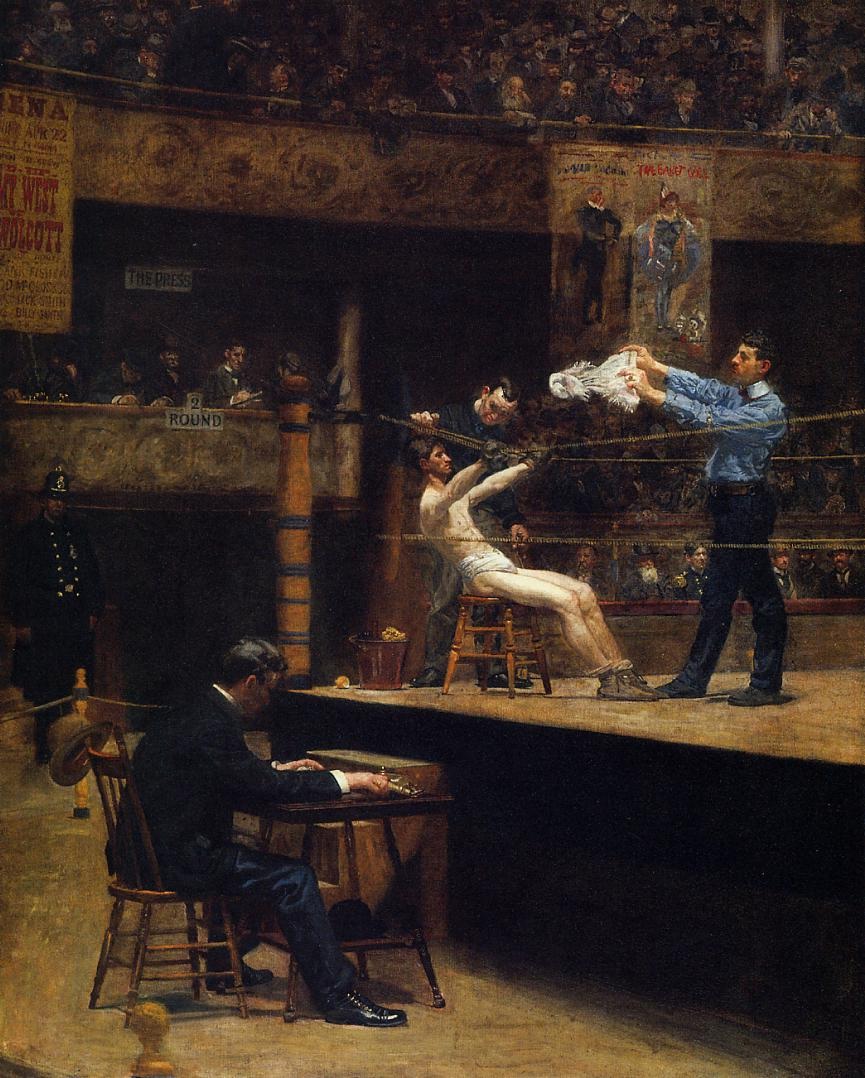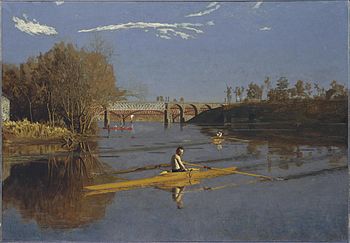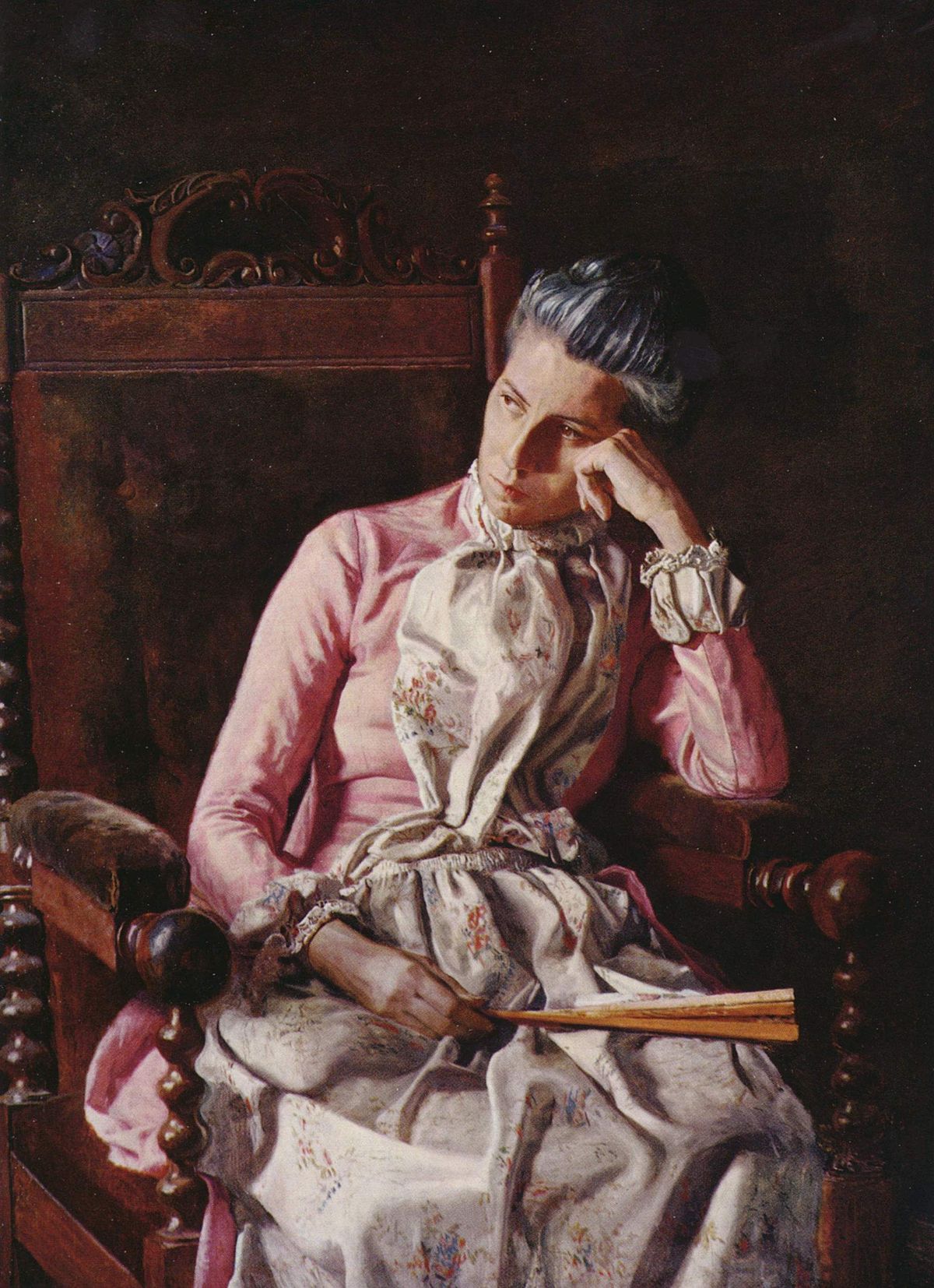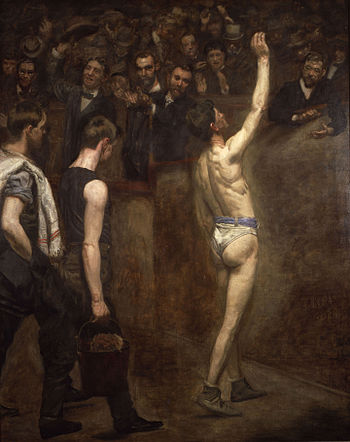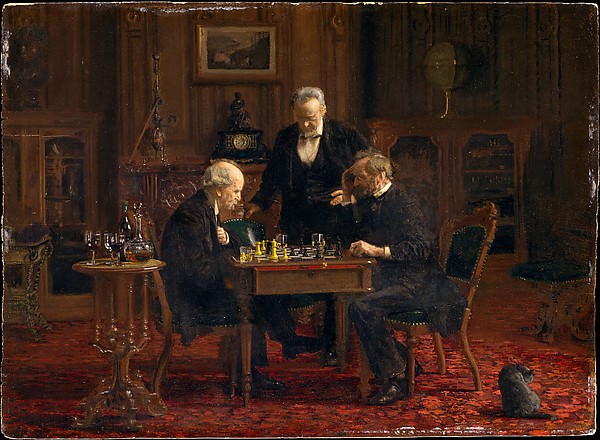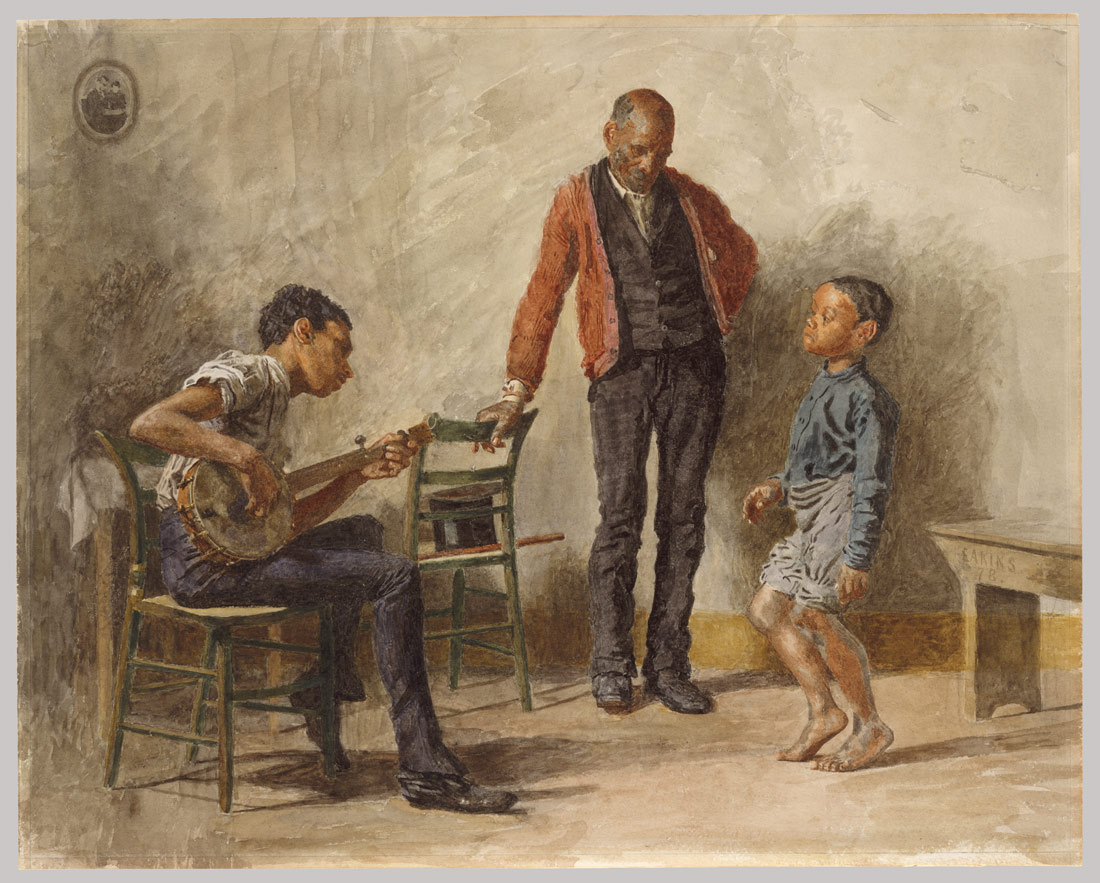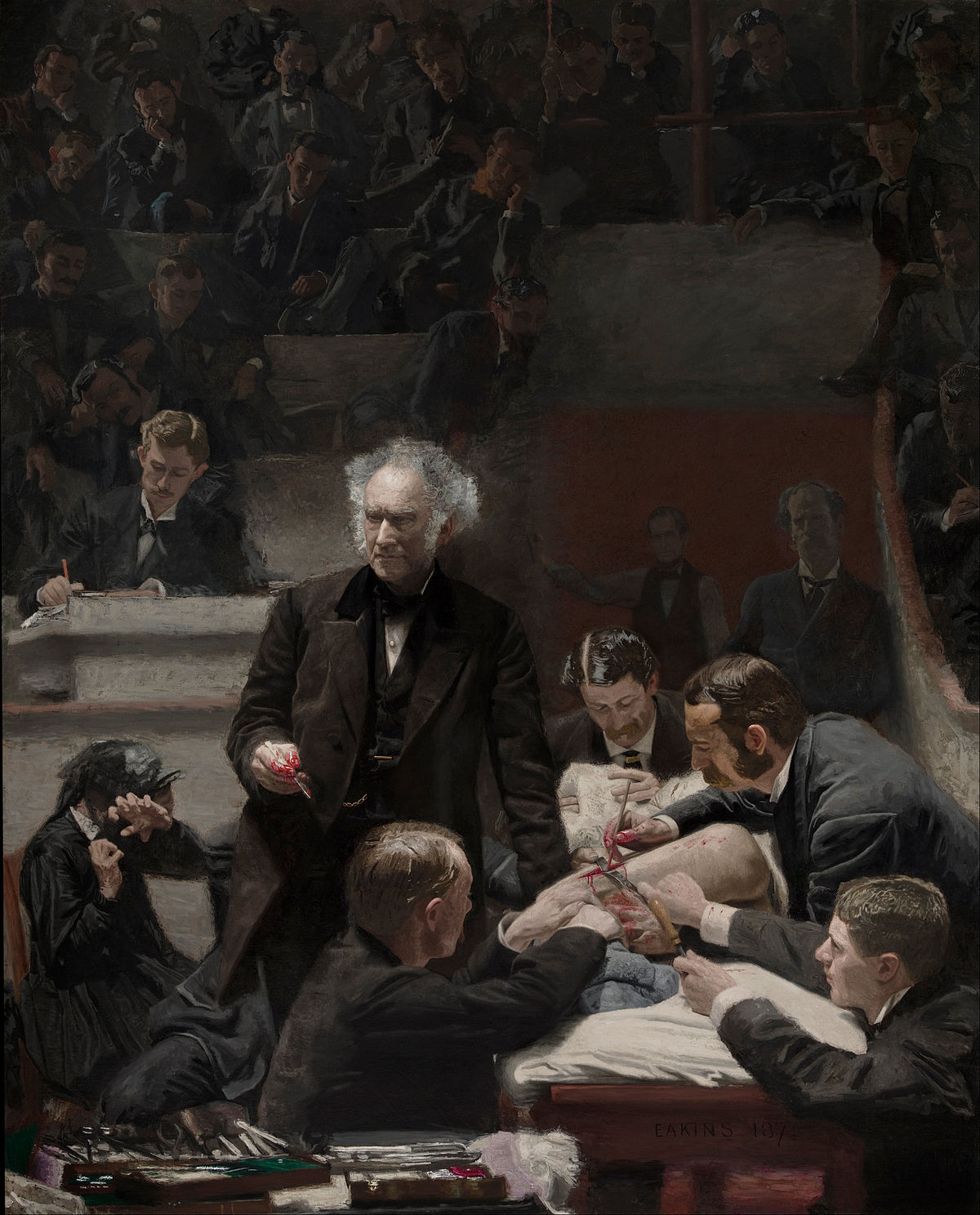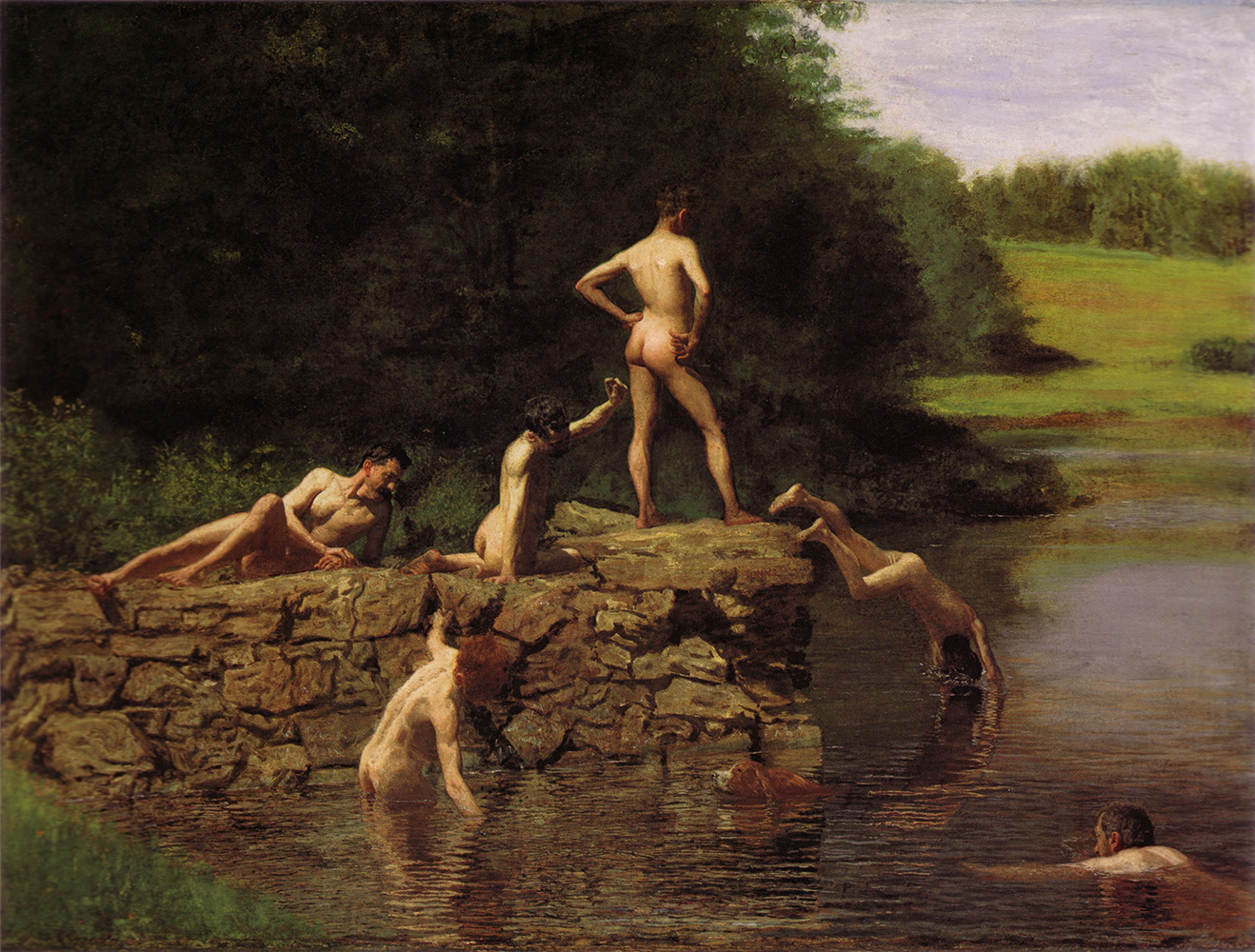- Overview
-
Thomas Eakins was an American realist painter, photographer, sculptor, and fine arts educator. He is widely acknowledged to be one of the most important artists in American art history. For the length of his professional career, from the early 1870s until his health began to fail some 40 years later, Eakins worked exactingly from life, choosing as his subject the people of his hometown of Philadelphia. He painted several hundred portraits, usually of friends, family members, or prominent people in the arts, sciences, medicine, and clergy. Taken en masse, the portraits offer an overview of the intellectual life of Philadelphia in the late 19th and early 20th centuries; individually, they are incisive depictions of thinking persons.
- Career
-
- Thomas Eakins embarked on a career as a professional painter upon his return from Europe. Reflecting his love for sports, he created a large number of paintings of rowing scenes, of which ‘The Champion Single Sculling’, known also as ‘Max Schmitt in a Single Scull’ (1871) became the most famous.
- During the early 1870s, he also began painting portraits of people, his early subject beings his sisters and other members of his family. He also made several paintings of his fiancée, Katherine Crowell and her family. His portraits of young women playing the piano, children engrossed with toys, and a girl playing with a kitten on her lap exuded the warmth of intimate home life.
- Eakins was also a skilled photographer credited to have "introduced the camera to the American art studio". He obtained his own camera in 1880, and many of his paintings including ‘Mending the Net’ (1881) and ‘Arcadia’ (1883) were derived at least in part from his photographs.
- He believed that women should be accorded the same professional privileges as men would be, and thus his women students had access to male models who were nude but for loincloths. In 1886, he removed the loincloth of a male model in a class where female students were present and was forced to resign because of the ensuing uproar over his inappropriate behavior.
- He was a very popular teacher and several of his students were so agitated at his resignation that they broke with the Academy and formed the Art Students' League of Philadelphia in 1886 where Thomas Eakins subsequently instructed until 1893. He also taught at other schools including the Art Students League of New York, the National Academy of Design, Cooper Union, and the Art Students' Guild in Washington DC. He withdrew from teaching by 1898.
- Thomas Eakins embarked on a career as a professional painter upon his return from Europe. Reflecting his love for sports, he created a large number of paintings of rowing scenes, of which ‘The Champion Single Sculling’, known also as ‘Max Schmitt in a Single Scull’ (1871) became the most famous.
- Legacy
-
In 1902 he was made a National Academician. In 1914 the sale of a portrait study of D. Hayes Agnew for The Agnew Clinic to Dr. Albert C. Barnes precipitated much publicity when rumors circulated that the selling price was fifty thousand dollars. In fact, Barnes bought the painting for four thousand dollars.
Eakins was honored with a memorial retrospective at the Metropolitan Museum of Art, and in 1917–18 the Pennsylvania Academy followed suit. Susan Macdowell Eakins did much to preserve his reputation, including gifting the Philadelphia Museum of Art with more than fifty of her husband's oil paintings.
- On View
-
- Philadelphia Museum of Art
- Metropolitan Museum of Art, New York City
- National Gallery of Art East Building, Washington D.C.
- Art Institute of Chicago
- Brooklyn Museum, New York City
- J. Paul Getty Museum
- Los Angeles County Museum of Art
- San Francisco Museum of Modern Art
- Rhode Island School of Design Museum, Providence
- Nelson-Atkins Museum of Art, Kansas City
- Columnbus Museum of Art
- Museum of Fine Arts, Boston
- The Phillips Collection, Washington D.C.
- Museum of Fine Arts, Houston

